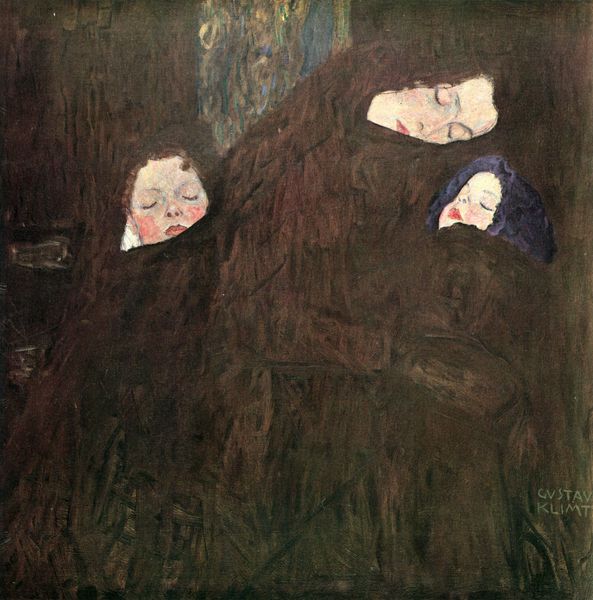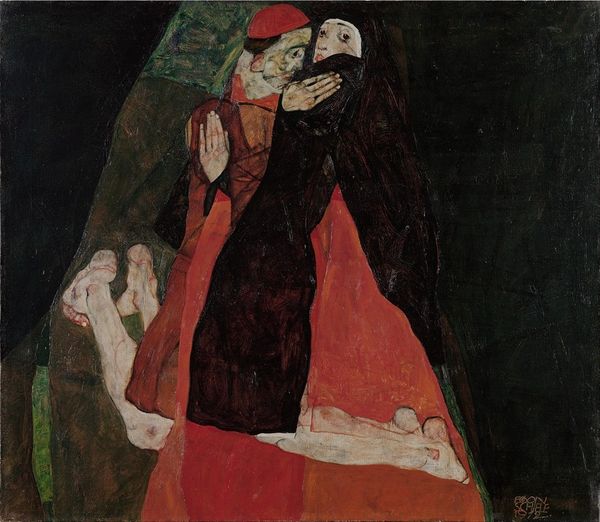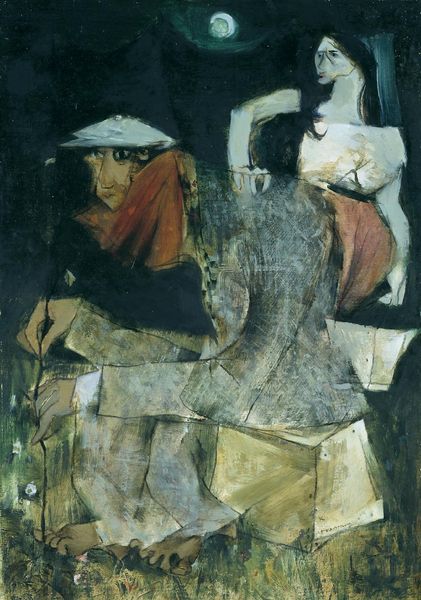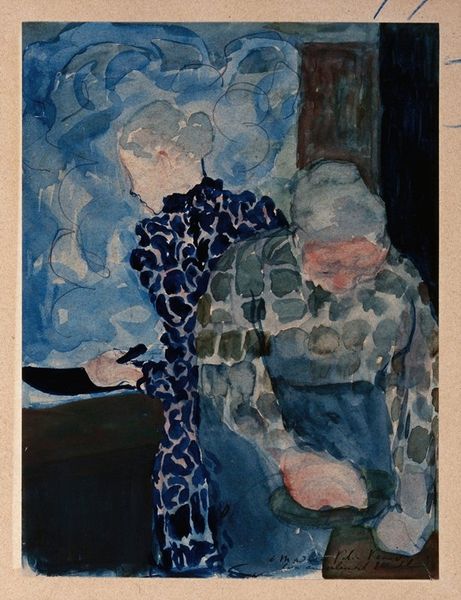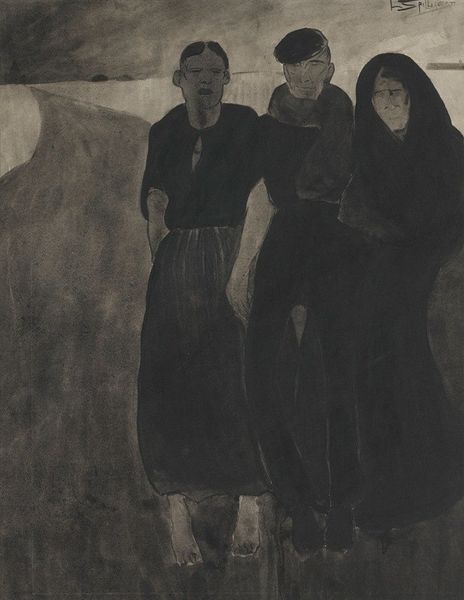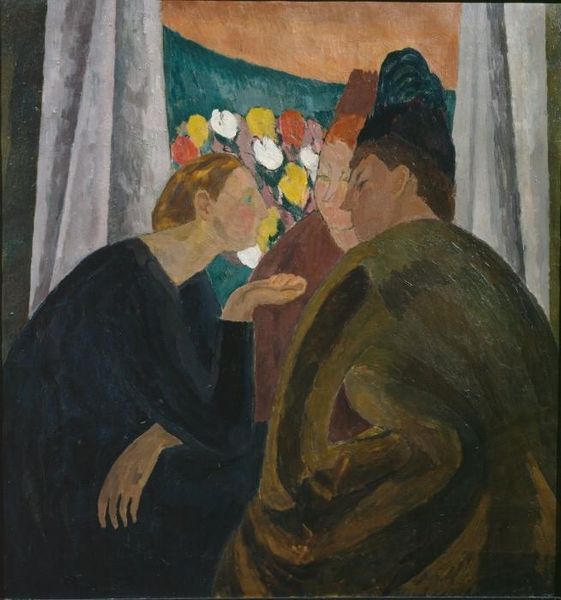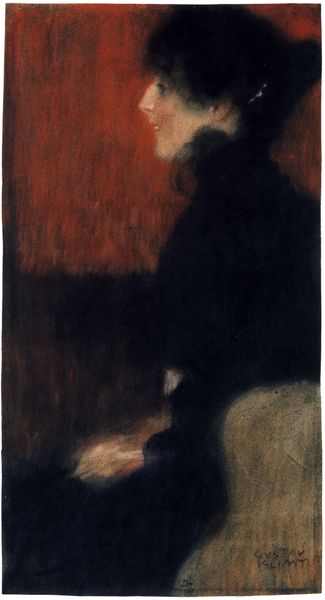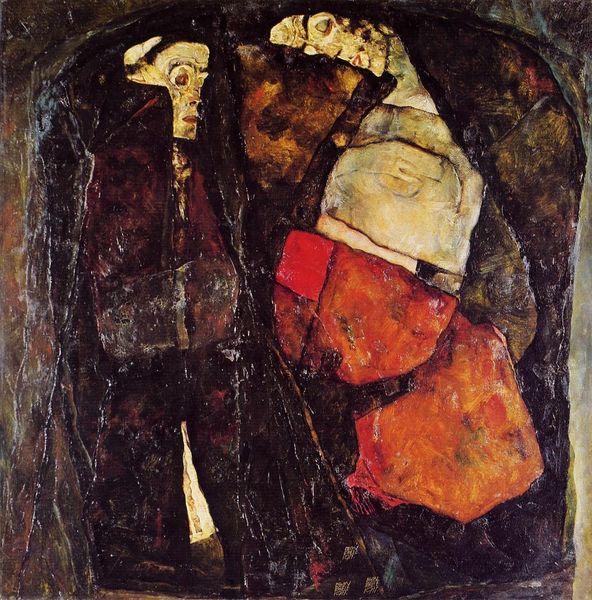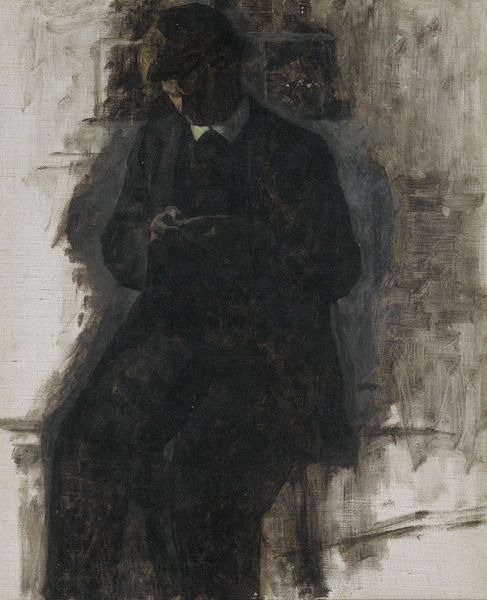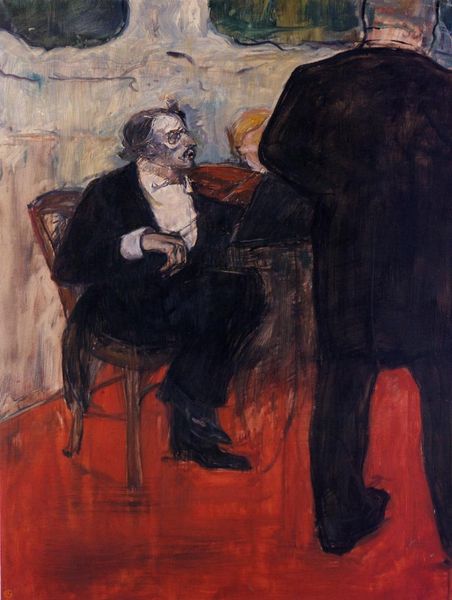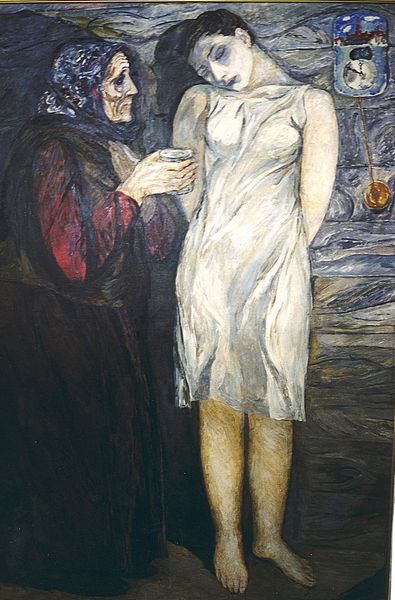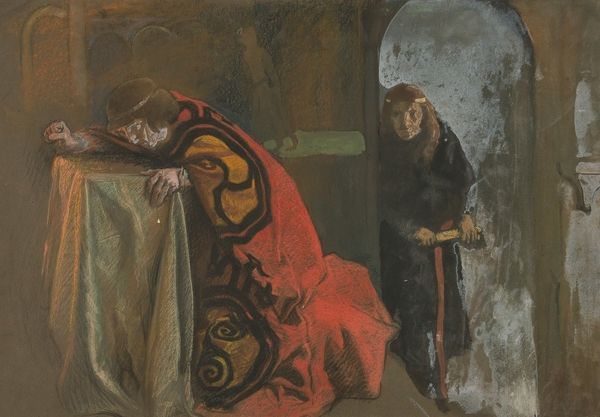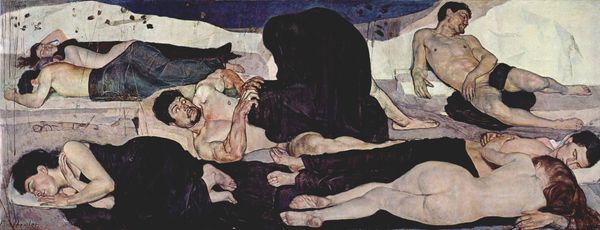
painting, oil-paint
#
portrait
#
figurative
#
painting
#
oil-paint
#
figuration
#
oil painting
#
neo expressionist
#
neo-expressionism
#
expressionism
#
portrait art
Copyright: Public Domain: Artvee
Editor: This is Egon Schiele’s oil painting, *The Hermits*, created in 1912. It feels heavy and somber to me, especially with the use of dark colors and the angular figures. How do you interpret this work? Curator: Focusing on its formal aspects, we see a deliberate arrangement of form and color. The interlocking figures, cloaked in somber hues, create a distinct verticality. Observe how Schiele uses line – broken and agitated – to delineate form. The lack of spatial depth directs the viewer's attention to the surface, underscoring the painting's materiality. Do you notice the textural contrasts, between the smooth faces and the rough fabric of the robes? Editor: Yes, the faces seem almost mask-like, separate from the texture of everything else. Are those blocks of colour on the robes, like a sort of visual code? Curator: Precisely. These geometric shapes introduce a plane of abstraction within the representational forms. Consider the palette: a limited range of earth tones contrasted by stark whites and small sections of vibrant colour. It is a strategy designed to generate compositional tension. What effect does that achieve for you? Editor: I think it highlights the faces and creates a visual pathway for me. The brighter parts of the canvas almost function like highlights on a stage. Curator: Indeed. The calculated manipulation of the formal elements in this piece—line, colour, texture, composition—renders an emotive scene whose artistic interest lies in the tension and balance of these artistic means. Editor: Thank you; now I see how the emotional impact is embedded in the artistic techniques and form. Curator: Quite so; recognizing such structure opens a portal to appreciating any artwork.
Comments
No comments
Be the first to comment and join the conversation on the ultimate creative platform.
